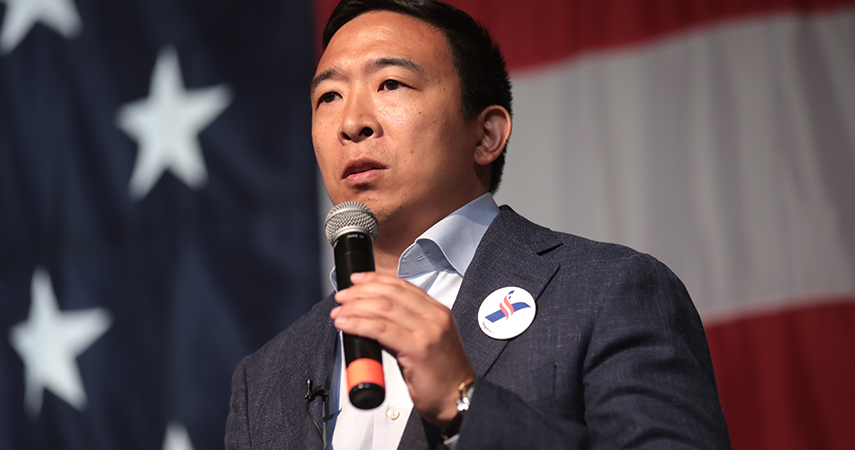Automation was in the spotlight at the Democratic debate

The subject of automation was in the spotlight again on Tuesday, as the state of Ohio played host to the 2020 Democratic presidential candidates in the fourth Democratic debate
Senator Elizabeth Warren, one of the twelve candidates, recently wrote that blaming job loss on automation is ”a good story, except it’s not really true.”
Democratic hopeful Andrew Yang was asked to respond.
“I’ve been talking to Americans around the country about automation,” Yang said, “And they’re smart. They see what’s happening around them. Their Main Street stores are closing. They see a self-serve kiosk in every McDonalds, every grocery store, every CVS.”
The looming threat of automation
Yang has been vocal about the looming threat of automation, running with it as one of his core policies throughout his campaign. It often goes hand in hand with his promise for UBI, which consists of a $1000 a month dividend for all Americans. He sees this “freedom” dividend and as a safety net for Americans who might find themselves out of work as a direct result of automation.
The debate itself did little to address the topic of automation. Instead, the Democratic candidates on-stage opted to blame free trade policy for the economic downturn, a subject that gels well with voters, along with the customary lambasting of President Donald Trump – his name was mentioned more than 80 times, automation was uttered just 9 times.
However, Yang did mention the fears he has for self-driving, autonomous vehicles, and what that might mean for millions of people.
“Driving a truck is the most common job in 29 states, including this one,” he said to the packed auditorium in Westerville, Ohio. “3.5 million truck drivers in this country. And my friends in California are piloting self-driving trucks.”
“What is that going to mean for the 3.5 million truckers or the 7 million Americans who work in truck stops, motels, and diners that rely upon the truckers getting out and having a meal? Saying this is a rules problem is ignoring the reality that Americans see around us every single day.”
Rep. Tulsi Gabbard weighed in.
“You know, really what this is about is getting to the heart of the fear that is well founded. As people look to this automation revolution, they look to uncertainty. They don’t know how this is going to affect their jobs and their everyday lives,” she said.
Automation might just be the talk of the decade. It looks to drastically alter the future of work for millions of people, for good or ill. But, for all the fear surrounding automation, reports suggest that more jobs will be created than will be lost.
A paper published earlier this year by ManPower Group revealed that companies which are digitising are growing, with new jobs being produced as a result of that digitisation. According to the report, manufacturing and production will see the most change. 25% of employers in the sector say that they will employ more people in the near-term. Increased robotic automation in the manufacturing industry is undoubtedly helping companies to boost productivity, which is proving critical to economic growth.
READ MORE: Where do humans fit into Industry 4.0?
It is estimated that, over the next decade, the manufacturing sector will produce up to 2 million new jobs in the US, and 2.7 million manufacturing workers are set to retire by 2025. To ensure that the skills shortage, education and learning is essential.
Whether automation will have such a drastic impact on American citizens still remains to be seen. Politicians on the campaign trail are right to broach the subject, but answers are as yet not forthcoming, and their path to solving these rapidly approaching changes remains clouded by political rhetoric.
